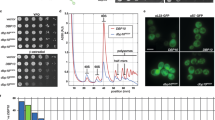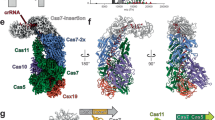Abstract
Proteins, the main players in current biological systems, are produced on ribosomes by sequential amide bond (peptide bond) formations between amino-acid-bearing tRNAs. The ribosome is an exquisite super-complex of RNA-proteins, containing more than 50 proteins and at least 3 kinds of RNAs. The combination of a variety of side chains of amino acids (typically 20 kinds with some exceptions) confers proteins with extraordinary structure and functions. The origin of peptide bond formation and the ribosome is crucial to the understanding of life itself. In this article, a possible evolutionary pathway to peptide bond formation machinery (proto-ribosome) will be discussed, with a special focus on the RNA minihelix (primordial form of modern tRNA) as a starting molecule. Combining the present data with recent experimental data, we can infer that the peptidyl transferase center (PTC) evolved from a primitive system in the RNA world comprising tRNA-like molecules formed by duplication of minihelix-like small RNA.




Similar content being viewed by others
References
Agmon I 2009 The dimeric proto-ribosome: Structural details and possible implications on the origin of life. Int. J. Mol. Sci. 10 2921–2934
Agmon I, Bashan A, Zarivach R and Yonath A 2005 Symmetry at the active site of the ribosome: structural and functional implications. Biol. Chem. 386 833–844
Ban N, Nissen P, Hansen J, Moore PB and Steitz TA 2000 The complete atomic structure of the large ribosomal subunit at 2.4 Å resolution. Science 289 905–920
Bieling P, Beringer M, Adio S and Rodnina MV 2006 Peptide bond formation does not involve acid-base catalysis by ribosomal residues. Nat. Struct. Mol. Biol. 13 423–428
Cannone JJ, Subramanian S, Schnare MN, Collett JR, D’Souza LM, Du Y, Feng B, Lin N, et al. 2002 The comparative RNA web (CRW) site: an online database of comparative sequence and structure information for ribosomal, intron, and other RNAs. BioMed Central Bioinformatics 3 2
Cooperman BS, Wooten T, Romero DP and Traut RR 1995 Histidine 229 in protein L2 is apparently essential for 50S peptidyl transferase activity. Biochem. Cell Biol. 73 1087–1094
Crick F 1970 Central dogma of molecular biology. Nature (London) 227 561–563
de Duve C 1995 Vital dust: Life as a cosmic imperative (New York, NY: Basic Books)
Doshi KJ, Cannone JJ, Cobaugh CW and Gutell RR 2004 Evaluation of the suitability of free-energy minimization using nearest-neighbor energy parameters for RNA secondary structure prediction. BioMed Central Bioinformatics 5 105
Erlacher MD and Polacek N 2008 Ribosomal catalysis: the evolution of mechanistic concepts for peptide bond formation and peptidyl-tRNA hydrolysis. RNA Biol. 5 5–12
Fox SW and Harada K 1958 Thermal copolymerization of amino acids to a product resembling protein. Science 128 1214
Francklyn C and Schimmel P 1989 Aminoacylation of RNA minihelices with alanine. Nature (London) 337 478–481
Frugier M, Florentz C and Giegé R 1994 Efficient aminoacylation of resected RNA helices by class II aspartyl-tRNA synthetase dependent on a single nucleotide. EMBO J. 13 2219–2226
Gilbert W 1986 The RNA world. Nature (London) 319 618
Guerrier-Takada C, Gardiner K, Marsh T, Pace N and Altman S 1983 The RNA moiety of ribonuclease P is the catalytic subunit of the enzyme. Cell 35 849–857
Ito K, Ebihara K, Uno M and Nakamura Y 1996 Conserved motifs in prokaryotic and eukaryotic polypeptide release factors: tRNA-protein mimicry hypothesis. Proc. Natl. Acad. Sci. USA 93 5443–5448
Ito K, Uno M and Nakamura Y 2000 A tripeptide 'anticodon' deciphers stop codons in messenger RNA. Nature (London) 403 680–684
Jühling F, Mörl M, Hartmann RK, Sprinzl M, Stadler PF and Pütz J 2009 tRNAdb 2009: compilation of tRNA sequences and tRNA genes. Nucleic Acids Res. 37(Database-Issue) 159–162
Kim SH, Suddath FL, Quigley GJ, McPherson A, Sussman JL, Wang AH, Seeman NC and Rich A 1974 Three-dimensional tertiary structure of yeast phenylalanine transfer RNA. Science 185 435–440
Korostelev A and Noller HF 2007 The ribosome in focus: new structures bring new insights. Trends Biochem. Sci. 32 434–441
Kruger K, Grabowski PJ, Zaug AJ, Sands J, Gottschling DE and Cech TR 1982 Self-splicing RNA: autoexcision and autocyclization of the ribosomal RNA intervening sequence of Tetrahymena. Cell 31 147–157
Martinis SA and Schimmel P 1997 Small RNA oligonucleotide substrates for specific aminoacylations; tRNA: Structure, biosynthesis, and function (Washington, DC: ASM Press) pp 349–370
Moazed D and Noller HF 1991 Sites of interaction of the CCA end of peptidyl-tRNA with 23S rRNA. Proc. Natl. Acad. Sci. USA 88 3725–3728
Moore PB 1991 Ribosomes. Curr. Opin. Struct. Biol. 1 258–263
Musier-Forsyth K and Schimmel P 1999 Atomic determinants for aminoacylation of RNA minihelices and relationship to genetic code. Acc. Chem. Res. 32 368–375
Nissen P, Hansen J, Ban N, Moore PB and Steitz TA 2000 The structural basis of ribosome activity in peptide bond synthesis. Science 289 920–930
Noller HF 1993 On the origin of the ribosome: coevolution of subdomains of tRNA and rRNA. The RNA World (Plainview, NY: Cold Spring Harbor Laboratory Press) pp 137–156
Noller HF, Hoffarth V and Zimniak L 1992 Unusual resistance of peptidyl transferase to protein extraction procedures. Science 256 1416–1419
Paecht-Horowitz M, Berger J and Katchalsky A 1970 Prebiotic synthesis of polypeptides by heterogeneous polycondensation of amino-acid adenylates. Nature (London) 228 636–639
Pech M and Nierhaus KH 2008 Ribosomal peptide-bond formation. Chem. Biol. 15 417–419
Polacek N, Gaynor M, Yassin A and Mankin AS 2001 Ribosomal peptidyl transferase can withstand mutations at the putative catalytic nucleotide. Nature (London) 411 498–501
Ramakrishnan V 2008 What we have learned from ribosome structures. Biochem. Soc. Trans. 36 567–574
Robertus JD, Ladner JE, Finch JT, Rhodes D, Brown RS, Clark BF and Klug A 1974 Structure of yeast phenylalanine tRNA at 3 Å resolution. Nature (London) 250 546–551
Sardesai NY, Green R and Schimmel P 1999 Efficient 50S ribosome-catalyzed peptide bond synthesis with an aminoacyl minihelix. Biochemistry 38 12080–12088
Schimmel P 1987 Aminoacyl tRNA synthetases: general scheme of structure-function relationships in the polypeptides and recognition of transfer RNAs. Annu. Rev. Biochem. 56 125–158
Schimmel P, Giegé R, Moras D and Yokoyama S 1993 An operational RNA code for amino acids and possible relationship to genetic code. Proc. Natl. Acad. Sci. USA 90 8763–8768
Schimmel P and Ribas de Pouplana L 1995 Transfer RNA: from minihelix to genetic code. Cell 81 983–986
Schimmel P and Alexander RW 1998 All you need is RNA. Science 281 658–659
Schluenzen F, Tocilj A, Zarivach R, Harms J, Gluehmann M, Janell D, Bashan A, Bartels H, Agmon I, Franceschi F and Yonath A 2000 Structure of functionally activated small ribosomal subunit at 3.3 angstroms resolution. Cell 102 615–623
Steitz TA 2008 A structural understanding of the dynamic ribosome machine. Nat. Rev. Mol. Cell. Biol. 9 242–253
Tamura K 1994 The role of the CCA sequence of tRNA in the peptidyl transfer reaction. FEBS Lett. 353 173–176
Tamura K 2008 Origin of amino acid homochirality: relationship with the RNA world and origin of tRNA aminoacylation. Biosystems 92 91–98
Tamura K 2009 Molecular handedness of life: significance of RNA aminoacylation. J. Biosci. 34 991–994
Tamura K 2010 Amino acid homochirality and the RNA world: necessities for life on Earth. J. Cosmol. 5 883–889
Tamura K 2011 Molecular basis for chiral selection in RNA aminoacylation. Int. J. Mol. Sci. 12 4745–4757
Tamura K and Alexander RW 2004 Peptide synthesis through evolution. Cell. Mol. Life Sci. 61 1317–1330
Tamura K and Schimmel P 2001 Oligonucleotide-directed peptide synthesis in a ribosome-and ribozyme-free system. Proc. Natl. Acad. Sci. USA 98 1393–1397
Tamura K and Schimmel P 2004 Chiral-selective aminoacylation of an RNA minihelix. Science 305 1253
Tamura K and Schimmel PR 2006 Chiral-selective aminoacylation of an RNA minihelix: mechanistic features and chiral suppression. Proc. Natl. Acad. Sci. USA 103 13750–13752
Tanaka T and Kikuchi Y 2001 Origin of the cloverleaf shape of transfer RNA-the double-hairpin model: implication for the role of tRNA intro and the long extra loop. Viva Origino 29 134–142
Thompson J, Kim DF, O’Connor M, Lieberman KR, Bayfield MA, Gregory ST, Green R, Noller HF and Dahlberg AE 2001 Analysis of mutations at residues A2451 and G2447 of 23S rRNA in the peptidyltransferase active site of the 50S ribosomal subunit. Proc. Natl. Acad. Sci. USA 98 9002–9007
Wächtershäuser G 1992 Groundworks for an evolutionary biochemistry: the iron-sulphur world. Prog. Biophys. Mol. Biol. 58 85–201
Weber AL and Orgel LE 1978 The formation of peptides from the 2′(3′)-glycyl ester of a nucleotide. J. Mol. Evol, 11 189–198
Weber AL and Orgel LE 1979 The formation of dipeptides from amino acids and the 2′(3′)-glycyl ester of an adenylate. J. Mol. Evol. 13 185–192
Willumeit R, Forthmann S, Beckmann J, Diedrich G, Ratering R, Stuhrmann HB and Nierhaus KH 2001 Localization of the protein L2 in the 50 S subunit and the 70 S E. coli ribosome. J. Mol. Biol. 305 167–177
Wimberly BT, Brodersen DE, Clemons WM Jr, Morgan-Warren RJ, Carter AP, Vonrhein C, Hartsch T and Ramakrishnan V 2000 Structure of the 30S ribosomal subunit. Nature (London) 407 327–339
Zhang B and Cech TR 1997 Peptide bond formation by in vitro selected ribozymes. Nature (London) 390 96–100
Acknowledgements
I thank Dr Koichi Ito for providing valuable comments on the manuscript and support in the assembly of figures. This work was supported by a grant from PRESTO (RNA and Biofunctions), the Japan Science and Technology Agency (JST), Japan, and by the program for development of strategic research center in private universities by the Ministry of Education, Culture, Sports, Science and Technology (MEXT), Japan.
Author information
Authors and Affiliations
Corresponding author
Additional information
Corresponding editor: Durgadas P Kasbekar
[Tamura K 2011 Ribosome evolution: Emergence of peptide synthesis machinery. J. Biosci. 36] DOI 10.1007/s12038-011-9158-2
Rights and permissions
About this article
Cite this article
Tamura, K. Ribosome evolution: Emergence of peptide synthesis machinery. J Biosci 36, 921–928 (2011). https://doi.org/10.1007/s12038-011-9158-2
Received:
Accepted:
Published:
Issue Date:
DOI: https://doi.org/10.1007/s12038-011-9158-2




